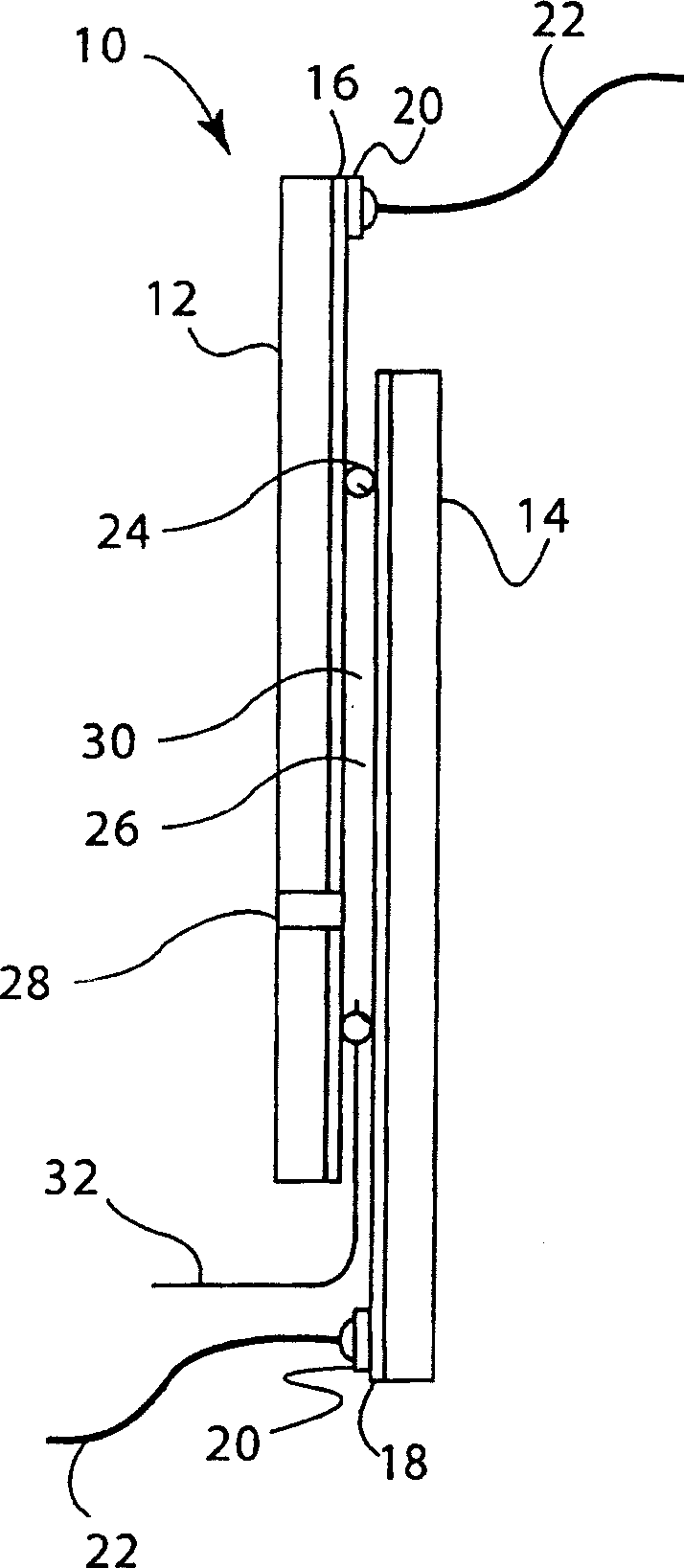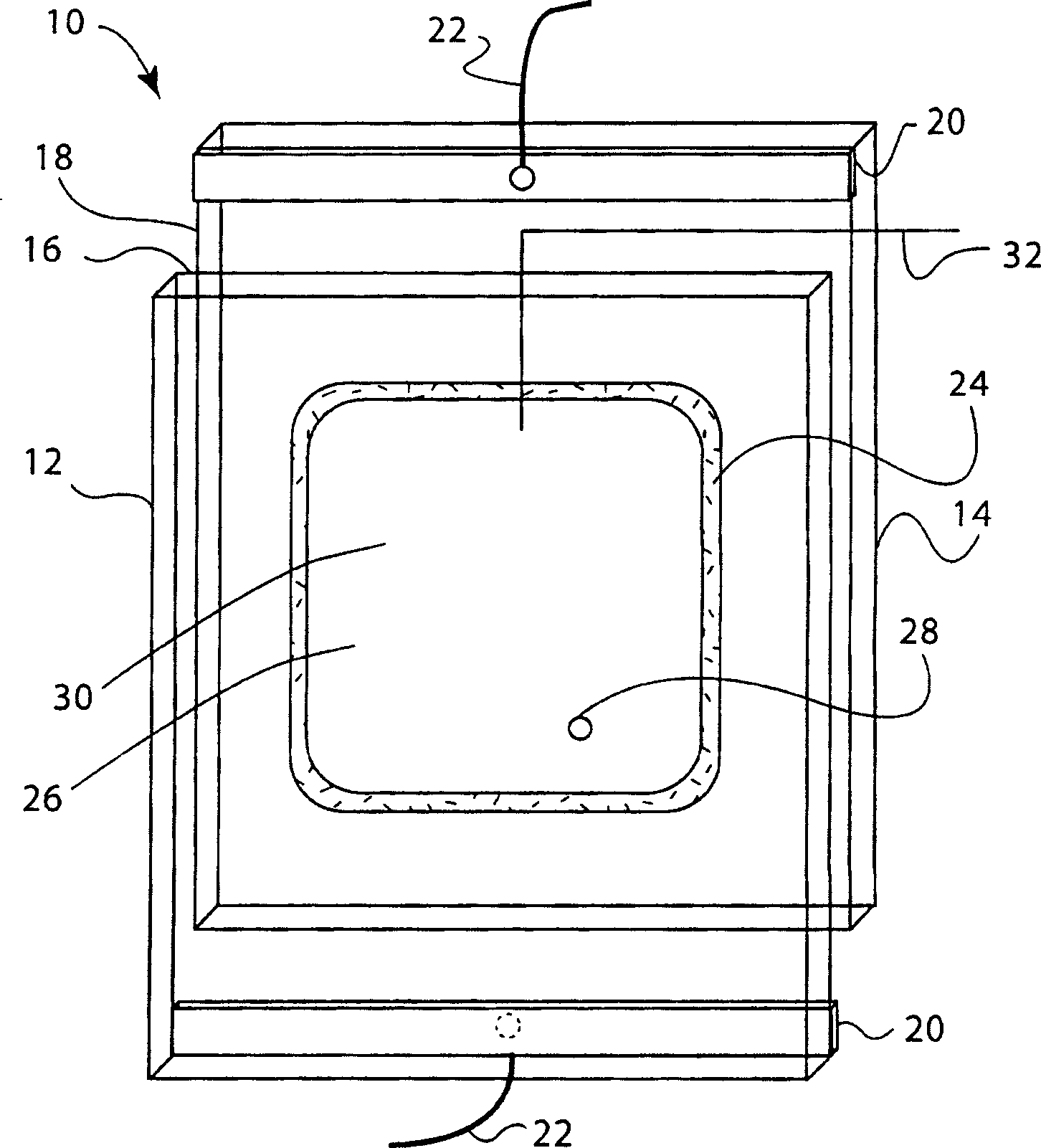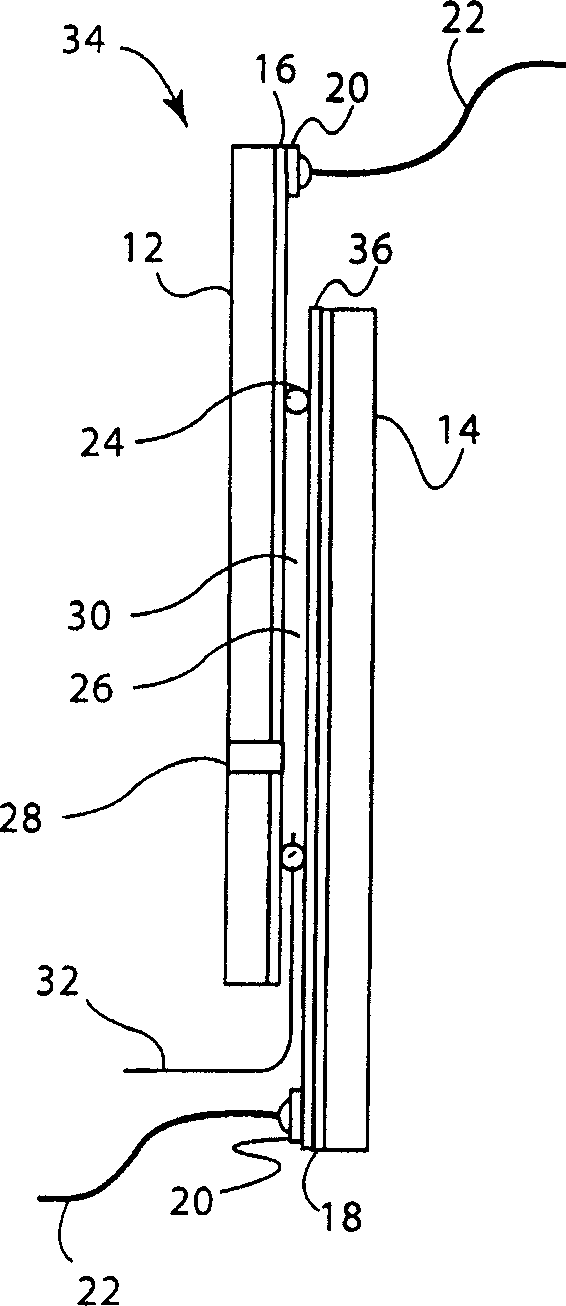Electrolytes for electrooptic devices comprising ionic liquids
A technology of ionic liquid solvent and electrolyte solution, which is applied in the field of electrolyte used in electro-optical devices containing ionic liquids, can solve the problems of poor electrochemical stability, high volatility, and no specific details of electrolyte components, etc.
- Summary
- Abstract
- Description
- Claims
- Application Information
AI Technical Summary
Problems solved by technology
Method used
Image
Examples
example 1
[0168] Example 1: Absorption Spectrum of UV Stabilizer in Ionic Liquid Solvent
[0169] After determination, propylene carbonate, 1-butyl-3-methylimidazole bis(trifluoromethylsulfonyl)imide, N-butyl-N-methylpyrroline bis(trifluoromethylsulfonyl) Imine and N-butyl-N-methylpyrrole with 1% UV stabilizer Uvinul 3035 (diphenyl ethyl 2-cyano-3,3-propenoate, BASF, Mount olive, NJ) The absorption spectrum of the morphine bis(trifluoromethylsulfonyl)imide solution is between 250 and 800 nanometers. Both 1-butyl-3-methylimidazolium bis(trifluoromethylsulfonyl)imide and N-butyl-N-methylpyrroline bis(trifluoromethylsulfonyl)imide are useful in the present invention Ionic liquid solvent. 1-Butyl-3-methylimidazole bis(trifluoromethylsulfonyl)imide has better absorption of ultraviolet light (wavelength below 400 nm) than N-butyl-N due to its higher conjugation -Methylpyrroline bis(trifluoromethylsulfonyl)imide. The solution formed by 1-butyl-3-methylimidazolium bis(trifluoromethylsulfo...
example 2
[0170] Example 2: Electrochromic Window Device with Electrolyte Solution Containing Redox Dye
[0171] The ITO substrate was cut into two 5.25 inch by 3.7 inch rectangles. Drill two holes about 3mm in diameter near the opposite corners of the rectangle. The substrates are then washed, dried and stored in a clean room. Sprinkle 105 micron glass beads containing epoxy substances around the first substrate, and place the second substrate on top of the first substrate so that a cavity is formed between the two substrates, with the centers of the two substrates at It is slightly staggered in the direction of its long side. In this way, the exposed sides of the two substrates can be used to place bus bars and make conductive connections. The epoxy sealant is cured at 120°C. The cavity is filled with a liquid electrolyte solution at room temperature; the liquid electrolyte solution contains a 0.015M charge transfer complex composed of bis(trifluoromethyl) dissolved in 1-butyl-3...
example 3
[0172] Example 3: Electrochromic window unit with tungsten oxide coating
[0173] Prepare two ITO substrates according to the method described in example 2, difference is that the substrate in this example does not carry out drilling, and the tungsten oxide layer (on conductive side) of one deck 300 nanometers thick is covered on the substrate, this The layer of tungsten oxide contained lithium oxide (based on tungsten atoms) at a molar fraction of 30%. This overburden is formed by the wet chemical enrichment process described in US Patent No. 6,266,177. Other methods, such as chemical vapor deposition and physical vapor deposition, can also be used to form this layer of tungsten oxide on the substrate. This layer of tungsten oxide is baked at 135°C in a humid environment, and then fired at 250°C in air. The substrates were then fabricated into device units by the procedure described in Example 1. The thickness of the cavity is 175 microns. The cavity is filled with elec...
PUM
| Property | Measurement | Unit |
|---|---|---|
| glass transition temperature | aaaaa | aaaaa |
| thickness | aaaaa | aaaaa |
| thickness | aaaaa | aaaaa |
Abstract
Description
Claims
Application Information
 Login to View More
Login to View More - R&D
- Intellectual Property
- Life Sciences
- Materials
- Tech Scout
- Unparalleled Data Quality
- Higher Quality Content
- 60% Fewer Hallucinations
Browse by: Latest US Patents, China's latest patents, Technical Efficacy Thesaurus, Application Domain, Technology Topic, Popular Technical Reports.
© 2025 PatSnap. All rights reserved.Legal|Privacy policy|Modern Slavery Act Transparency Statement|Sitemap|About US| Contact US: help@patsnap.com



